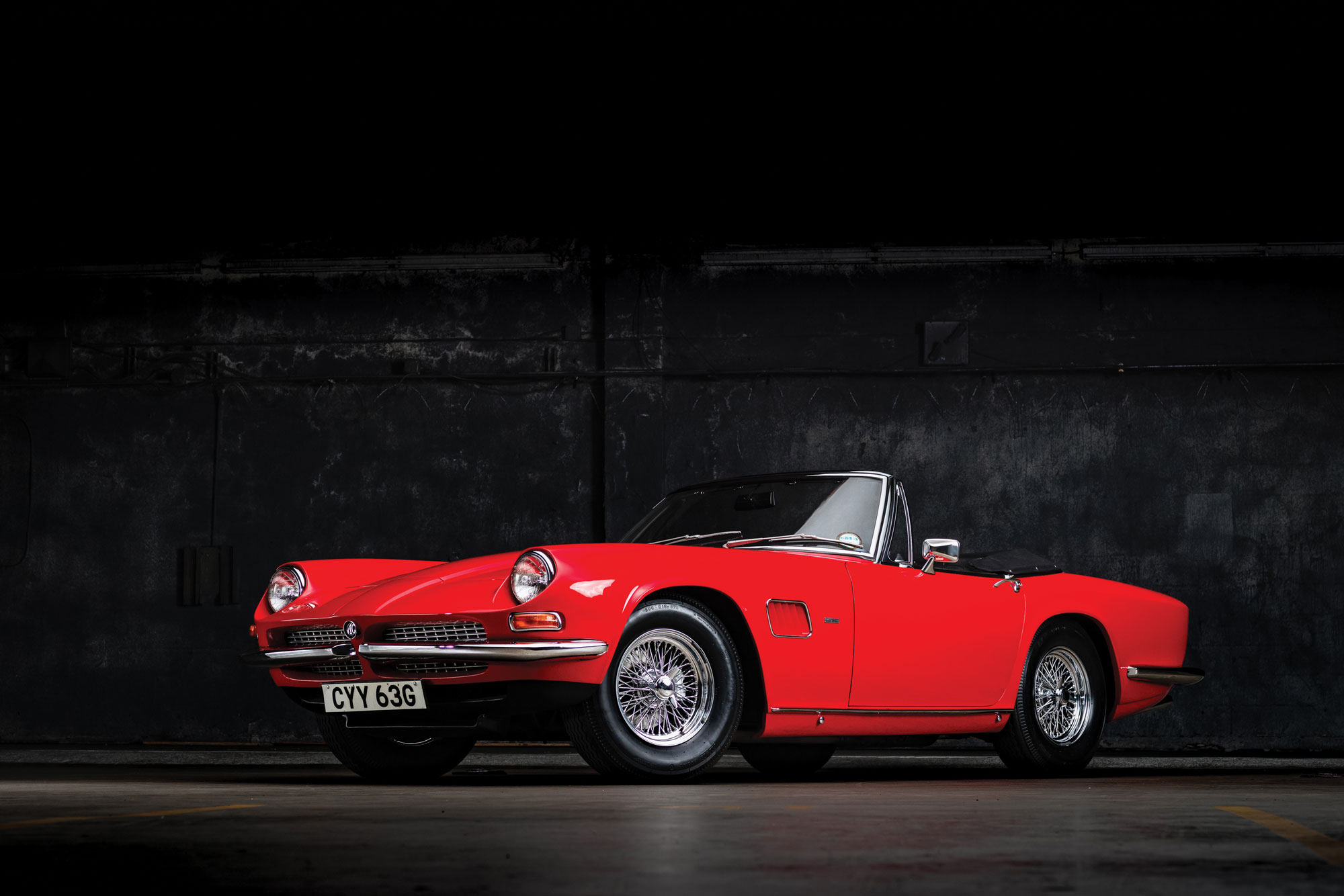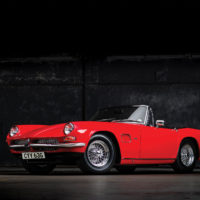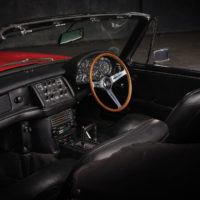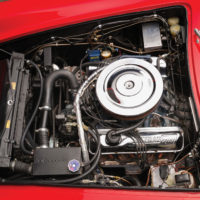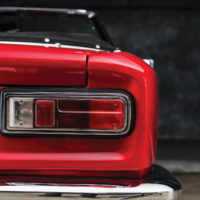SCM Analysis
Detailing
| Vehicle: | 1968 AC 428 Spider by Frua |
| Years Produced: | 1965–73 |
| Number Produced: | 81 |
| SCM Valuation: | $185,000 |
| Tune Up Cost: | $300 |
| Chassis Number Location: | Plate on firewall |
| Engine Number Location: | Plate on firewall |
| Club Info: | AC Owners Club |
| Website: | http://www.acownersclub.co.uk |
| Alternatives: | 1965–74 Iso Grifo, 1966–72 Intermeccanica Italia, 1966–76 Jensen Interceptor |
| Investment Grade: | B |
This car, Lot 308, sold for $302,000, including buyer’s premium, at RM Sotheby’s Monterey, CA, auction on August 14, 2021.
I was 12 when I went on my first overseas trip, to London. My mother, who often indulged my love of cars because she was a fan herself, bought me a copy of that year’s annual new-model survey, likely from Autocar or Motor, a lengthy compendium of cars mostly unavailable in the U.S. Not all those products were noteworthy, of course, but there was one page that I kept coming back to: The AC 428.
Here was a lithe, sinewy coupe, whose long wheelbase and narrow body section was accented by massive wheelwells that reached nearly up to its beltline. The action shot in the article showed its haunches compressed into the automotive equivalent of a snarl, tearing up a gravel road with pebbles flying. What could be more attractive than this combination of sexy styling with the ample brawn of a large American V8?
The Italian job
The idea of blending exotic Italian coachwork with cheap American propulsion wasn’t really a new idea when the first wave of Italo-American “hybrids” emerged in the early 1960s. Its origins can perhaps be traced to the chance meeting in 1949 between Donald Healey and Nash-Kelvinator boss George Mason aboard the Queen Elizabeth. This ultimately resulted in the second-generation, Pinin Farina-styled Nash-Healey three years later.
In the meantime, Chrysler farmed out concept-car construction to Ghia to reduce costs, Hudson commissioned Touring to build a limited run of Italias, and Briggs Cunningham turned to Vignale to body his C3 coupe and roadster.
What really set the ball rolling, though, was the introduction of Chevrolet and Ford small-block V8s, starting with Chevrolet in 1955. These engines offered automotive entrepreneurs cheap, reliable and robust propulsion without the millions required to develop and tool their own powerplants. These transatlantic hookups eventually expanded to include the Gordon-Keeble in 1960 and Iso’s Rivolta in 1962, both styled by Bertone. Later came Frank Reisner’s Intermeccanica Italia.
A Cobra by any other name
The same concept was, of course, being exploited further north by AC and Carroll Shelby, though without the Italian coachwork. Despite the modest success of the first small-block Cobras, the thundering 1965 big-block Mark III foundered just two years after launch. The 427 Cobra was a victim of increasing costs, shrinking demand and looming U.S. regulations. In search of a Cobra counterpart, AC briefly flirted with an in-house alternative, the MA-200, but opted instead to leverage the Ford-developed Mark III chassis and update the Cobra’s coachwork.
Assisted by Swiss racing driver and AC importer Hubert Patthey, AC chief Derek Hurlock initially considered Bertone. But due to capacity issues, he turned to Frua instead. In the summer of 1965, they developed a convertible prototype in time for the Earl’s Court show later that year. This was no doubt assisted by Frua’s prior development of the quite similar Maserati Mistral.
The combination of Frua’s styling with the lazy Ford big block made for an alluring combination, albeit one that was never fully refined by tiny AC. “No skill or courage is needed to reel off 0–100 mph runs in 16 seconds or so,” wrote Car in March 1969. “You just stick the central lever in D and press the throttle to the floor.”
Yet despite all the power on tap and the benefits of the Mark III’s independent rear suspension, the AC 428’s shortcomings were all too apparent: poor wind sealing at the doors, loss of oil pressure due to inadequate engine cooling and tremendous heat in the cockpit from the massive engine. Owners soon discovered that rust was also a persistent issue.
A new benchmark?
Our subject car comes from the noted Oregon AC collector Jim Feldman, who has owned no fewer than four 428s. As one of only 30 convertibles built, the car is already exclusive enough, but it has an added pedigree of first owner Rob Walker. Feldman’s Spider has benefited from attention to the 428’s specific technical issues, including improved engine cooling as well as aftermarket air conditioning. (Feldman notes that it is only partially successful in overcoming the 428’s prodigious footwell heat buildup.)
That helps explain why, at $302,000, this convertible may have set a high-water mark for 428 sales. With so few cars built — and relatively few sales to judge pricing trends — it’s difficult to come up with a logical valuation for these especially rare cars. A 1971 coupe previously in the Feldman collection sold for $173,600 on the same weekend as the convertible. Its substantially lower price reinforces the maxim that when the top goes down, the price goes up.
It also indicates that despite their shared mechanical DNA, AC 428s have yet to enjoy the exponential run-up in values of their Cobra counterparts. (This fact is not lost on several 428 owners who reverse-engineered their cars back into Cobras.) Perhaps they never will. ♦
(Introductory description courtesy of RM Sotheby’s.)
